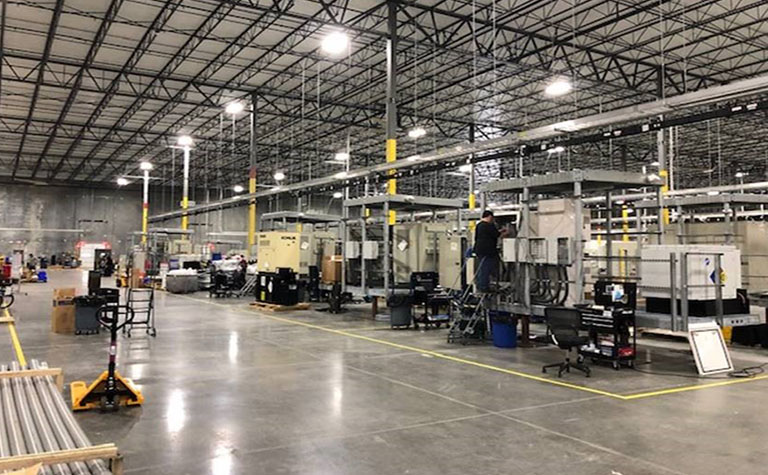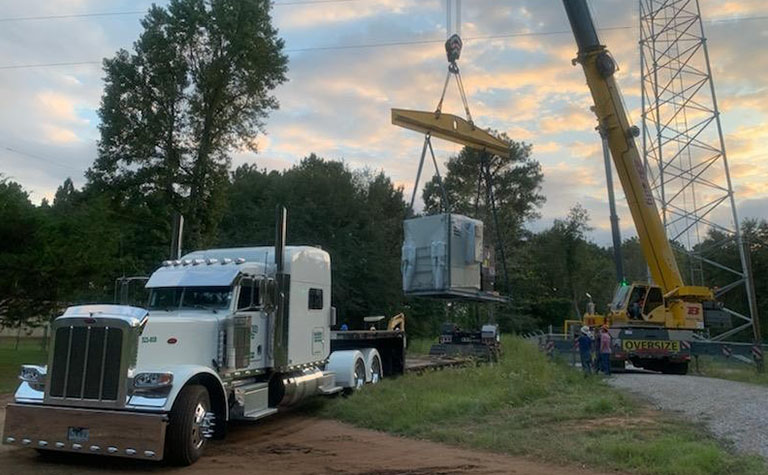share


Online orders taking longer to arrive, greater reliance on food and grocery delivery services, and delays at the Post Office have consumers asking more and more, “Where’s my stuff?”
Businesses large and small face the same challenges in getting goods to the marketplace and are asking the same questions. Supply Chain, once invisible, is suddenly front and center. Thanks to COVID-19, Supply Chain has become sexy.
According to a McKinsey survey of supply chain leaders, COVID revealed several key supply chain issues:
- 73% encountered problems in their supplier base (such as shortages)
- 75% faced issues in their production/distribution footprint
- 85% struggled with insufficient digital technologies
COVID-19 has changed everything we do at AT&T. We’re carrying 20% more data on our network than before the pandemic, enabling work-from-home for a growing percentage of American workers and business owners, while supporting first responders as public safety’s partner with FirstNet.
A resilient supply chain is vital in supporting these operations.
We spent more than $70 billion last year on goods and services around the globe through our Global Supply Chain organization. That’s everything from network equipment, gateways, and Wi-Fi hotspots to cell phones and light bulbs. Mostly invisible to the outside world.
The impact of COVID-19
For us, the impact of the pandemic has been minimal – we have worked with our approximately 20,000 suppliers well in advance to ensure we have a geographically diverse and resilient supply chain to reduce our risk in just such unforeseen situations.
When the pandemic hit, I didn’t even know what PPE (Personal Protective Equipment) was. What a learning curve! We had to quickly pivot and mitigate the global impact to AT&T.
That meant first and foremost keeping our 243,000 employees safe. We sent 130,000 employees to work from home and shifted retail resources from in-store to online. We still had to support 90,000 front-line employees.
To do that, we secured more than 5 million pounds of PPE including:
- More than 5 million face masks
- 9 million pairs of sanitary gloves
- More than 3 million bottles of hand sanitizer
- More than 50,000 spray bottles of disinfectant
Some of our smaller diverse suppliers have help us meet the challenges of COVID-19. For example, a disabled veteran-owned business in Indiana is providing 135,000 gallons of hand sanitizer and a minority-owned business in California is helping us distribute PPE through their extensive global network.
Core values
In times of crises, a company’s core values are often exposed. Diversity & Inclusion is a core value for us.
Supplier Diversity has long been an important component of our identity and within Global Supply Chain. Our supply base should be as diverse as our employee base and the customers we serve. It’s also how we bring innovation and fresh ideas to AT&T.
That means including diverse suppliers in everything we do and encouraging our suppliers to do likewise. Our Global Supplier Diversity program encourages Tier One firms to subcontract to diverse businesses and we’re committed to spending $3 billion with Black-owned suppliers by the end of this year.
Be prepared
Geopolitical events such as new tariffs and trade restrictions over the past few years have helped us ensure that our supply chain was resilient. They have driven dramatic shifts in our supplier footprint over the last two years and helped prepare us for COVID-19.
The 2018 tariffs imposed on goods originating from China incentivized our suppliers to diversify their manufacturing footprint and reduce reliance on a single country.
Billions of dollars of spend — for such items as handsets, network routers and power supplies – shifted from China to the USA, and other countries such as Mexico, Taiwan, Thailand, and Vietnam. Then the pandemic forced multiple countries where we source products, such as India and Mexico, to shut down, forcing additional re-balancing.
To meet these challenges, we’re enhancing our capabilities to be able to proactively respond and manage risks from impacting global events through improved intelligence into the impact on our suppliers and knowing in advance through extensive data collection where our suppliers – and their suppliers – are concentrating their manufacturing of key products & components.
The Way Forward
We expect future policy changes will force us to continually re-evaluate our supplier base to ensure we are achieving an industry-leading cost structure while balancing resiliency and risk — and above all else putting our customers first.
5G reduces latency, delivers faster speeds, and brings forth innovative ideas such as network slicing, which will enhance our ability to track items, improve inventory management and streamline logistics operations. AT AT&T, we’re using IoT solutions to make our supply chain more efficient, for example, through near real-time monitoring of vehicles, drivers, and trips to glean data-driven insights.
But more than that we can expect dramatic changes over the next five years:
- An urgent push to improve/streamline supply chain technology and boost end-to-end digital capabilities. This will mean greater visibility to our suppliers and our suppliers’ suppliers production locations, financial health, and commitment to sustainability and Diversity and Inclusion.
- Machine learning will make real-time intelligence more predictive to help streamline operations and drive down costs and help move from reactive to proactive in anticipating the impact of global events.
- We’ve already seen a shift in customers going from purchasing in retail stores to shopping online and anticipate that an increased need for regionalization and inventory storage closer to the end customer will continue to drive change across our supply chain. We’ll need to continually assess and optimize our distribution footprint due to shifts in consumer preferences.
- A push for geographical and geopolitical balance — over the past several decades, global supply chains continual push for the lowest possible cost led to an overconcentration of suppliers in certain regions.
- Increased dual sourcing of products and raw materials, increased inventory of critical products, more near-shoring and regionalized supply chains.
- Sustainability in all things we do throughout our supply chain will be paramount. AT&T’s commitment to Carbon Neutrality by 2035 will require the support and working closely with many of our suppliers so we can ensure AT&T is doing our part to protect the environment.
We’re certainly better prepared to get through the continuing COVD-19 pandemic and the next crisis; maybe supply chain will even become invisible again. But the “next normal” is here to stay.
PR Archives: Latest, By Company, By Date